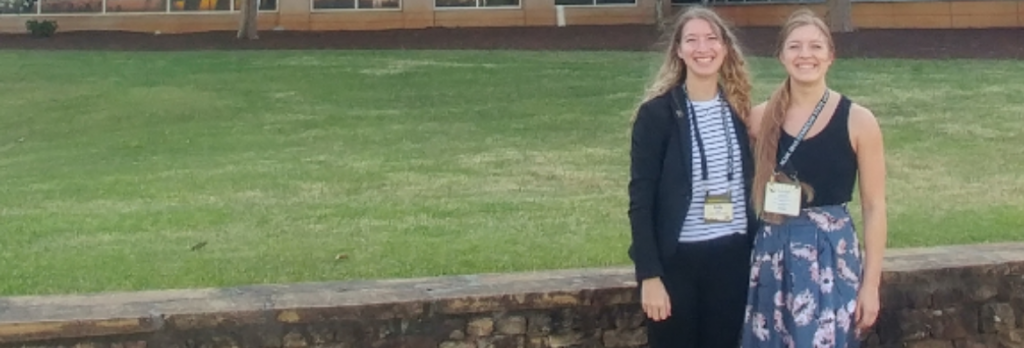Page 8 • (250 results in 0.028 seconds)
-
Pre-Licensure (RN-Preparation), 15 months, 56 semester credits
After completing the pre-licensure curriculum and upon successfully obtaining RN licensure in Washington state, students continue the Entry-Level MSN curriculum in either the Clinical Nurse Leader (CNL) track or Certified Nurse Educator (CNE) track (see below). Clinical Nurse Leader (CNL) Track: 2nd Year Fall SemesterGNUR 525: Theoretical Foundations (3) GNUR 541: Advanced Health Assessment & Health Promotion (3) GNUR 544: Advanced Nursing Management of Illness & Disease (4)3 credits 3 credits 4
-
Learning about the environment offers opportunities to integrate studies of nature and natural systems with those of human systems, and to bring both into dialogue with a humanistic understanding of
. Specifically, we educate to engage actively and critically the complex relationships between people and the environment, drawing upon integrated and interdisciplinary perspectives. Students graduating from Environmental Studies will be able to: Use an array of theoretical and practical tools to examine the complex relationships between people and the environment. Gather and assess data about local, regional, and global environmental issues. Interpret the values, assumptions and language that structure
-

Coordinator of Peace Scholars Program | Peace Scholars | simicmka@plu.edu | 253-535-7034 | Why do you serve on the Peace Scholars Committee? I was born and raised in Belgrade, Serbia (Former Yugoslavia), and have had first-hand experience with the effects of war and conflict. I teach in the Mathematics Department and have a particular interest in issues of equity and social justice in mathematics education.
Ksenija Simic-Muller Coordinator of Peace Scholars Program she/her/hers Phone: 253-535-7034 Email: simicmka@plu.edu Office Location: Morken Center for Learning & Technology - 253 Professional Biography Additional Titles/Roles Professor of Mathematics Chair of Mathematics Director of the STEM Education Minor Education Ph.D., Mathematics, Carnegie Mellon University, 2004 M.S., Mathematics, Carnegie Mellon University, 2000 Undergraduate, Theoretical Mathematics, University of Belgrade, 1997 Areas
-

ATLANTA, GA – Kennesaw State University Congrats to students Emily Burk and Cameron Raber, from the Department of Economics, for presenting their research at the National Conference on Undergraduate Research in Atlanta, Georgia April 10-13. The conference took place at Kennesaw State University. Emily Burk’s…
: “Incorporating Wildfire Risk into the Faustmann Rotation: A Dynamic Optimization Problem” and Cameron Raber’s: “Extending a Theoretical Framework For Superfund Site Remediation”. Job well done! Emily Burk Cameron Raber NCUR 2019NCUR 2019 Conference Read Previous PLU Alum Visits Department of Economics Read Next Economics Alum Receives Award LATEST POSTS Meet Cameron Emerson ’08 April 14, 2019 PLU Alum Visits Department of Economics April 15, 2019 Economics Alum Receives Award June 24, 2019 Combating Global
-
The awareness of physical activity and its beneficial health effects is becoming more prevalent. If you are interested in building a career in sports, fitness, physical education, or health care, a
The Science of Human Activity - A Guide to a Master’s Degree in Kinesiology /* theoretical and practical foundations of human activity. This resource is
-
1. Upon completion of the social work program, students will demonstrate professional and ethical behavior, including ethical decision-making, using reflection & self-regulation, demonstrating
theoretical frameworks in the analysis of assessment data.Revised 12/18/18
-
Summer Research in Computational Biology at the University of Pittsburgh Students will receive classroom training in topics pertinent to the emerging field of computational biology, such as computational structural biology, cell and systems modeling, computational genomics, and bioimage informatics, in addition to a wide variety…
TECBio REU at University of Pittsburgh Posted by: nicolacs / December 11, 2019 December 11, 2019 Summer Research in Computational Biology at the University of Pittsburgh Students will receive classroom training in topics pertinent to the emerging field of computational biology, such as computational structural biology, cell and systems modeling, computational genomics, and bioimage informatics, in addition to a wide variety of theoretical and experimental research projects. Students will
-
Learners will be able to demonstrate and apply their understanding of fundamental concepts by successfully solving a variety of physics problems in different contexts.
further study and research. Learners will be able to use professional-level resources to research, design, and/or implement an experimental or theoretical study to understand a physical phenomenon. Updated January 2019
-
The Department of Political Science is proud to present the 2023 Senior Capstones. The presentations will be given on May 24th in Xavier Hall, Room 201.
Harassment as a Female in the Washington State Legislature”.Ingri J. Bernal Salgado``Beyond the Blue Bins: Examining the Complexities of Recycling in Washington State.``Grant D. HoskinsNavigating a Theoretical Approach to Norway’s Government Pension Fund Global: How the Scandinavian Powerhouse will Preserve their Oil Wealth Management Success into the FutureQuan T. HuynhTrueblood: The Dichotomy of Washington's Moral Political Culture and Its Failure to Uphold JusticeAaron R. MillerQueer Theory
-
Thank you all for attending the 2016 Food Symposium!
-locality in Quantum Theory” at the University of Western Ontario in Canada. She later shifted to inter-disciplinary research in science, technology and environmental policy, which she carried out at the Indian Institute of Science and the Indian Institute of Management in Bangalore, India. In 1982, she left to set up her Research Foundation for Science, Technology and Natural Resource Policy in her home town of Dehra Dun in the foothills of the Himalaya. Her greatest learnings, however, have come from
Do you have any feedback for us? If so, feel free to use our Feedback Form.


